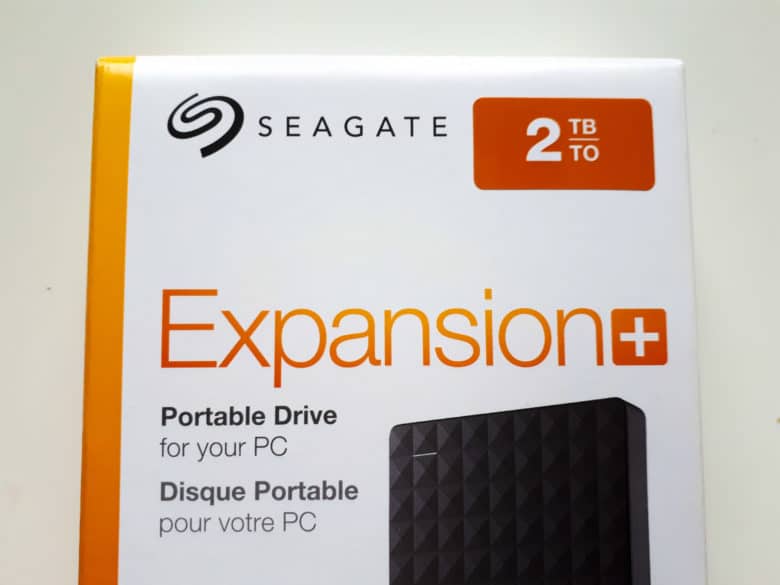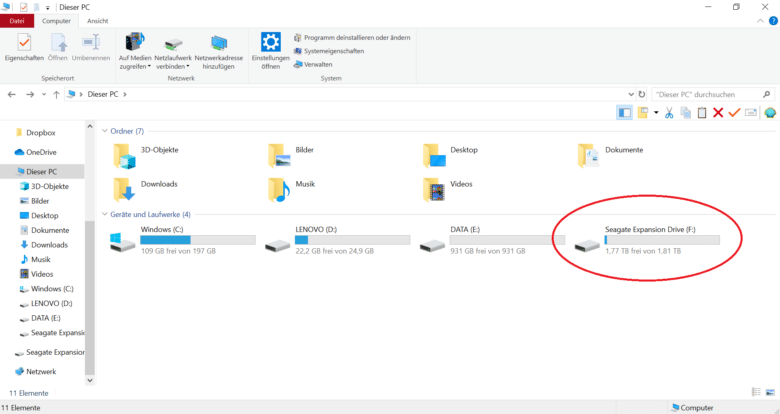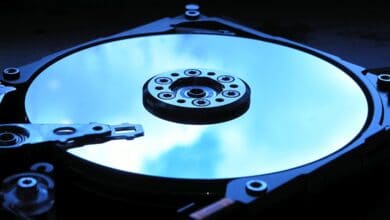
Have you ever wondered why your hard drive or USB flash drive has less available memory than the manufacturer has specified? Instead of the promised 1TB drive, you’ll suddenly see only 931GB – apparently for no apparent reason. In fact, this confusion of numbers is based on a simple conversion between two number systems: the decimal system we use in everyday computing, and the binary system our computer uses.
Data carriers calculate differently from manufacturers
The information on the data carriers is known to be designated by kilobytes, megabytes or gigabytes. To illustrate this, we have an external hard disk with a storage capacity of 2 terabytes (TB) according to the packaging (Figure 1).
Kilo or Mega are prefixes based on the decimal system by physical definition. The decimal system is the number system we learn in primary school and use every day, consciously or unconsciously: It uses ten digits from 0 to 9 and calculates in powers of ten like in this case 103 = 1000:
1 TB = 1000 GB = 1.000.000 MB = 1.000.000.000 KB
According to this calculation we would have to assume that the external hard disk in our example has exactly 2 TB = 2000 GB hard disk space. Figure 2 shows, however, that we seem to have only 1.81 TB available (red circle).
Terabyte versus Tibibyte
The problem is: computers use a different number system as a calculation basis. They use the binary system with the two digits 0 and 1 and calculate in powers of two instead of powers of ten. Therefore, the calculation by factor 1000 does not get any further, but has to be multiplied by factor 1024. We supplement the above calculation example with the values used by a computer:
1 TB = 1000 GB = 1.000.000 MB = 1.000.000.000 KB (decimal system)
1 TiB = 1024 GiB = 1.048.576 MiB = 1.073.741.824 KiB (binary system)
The units TiB for “Tibibyte” or GiB for “Gibibyte” sound very similar and express that these are binary multiples. Strictly speaking, this would be the correct specification on data carriers, but this form has never been accepted by manufacturers. If our hard disk had 2 tibibibytes instead of 2 terabytes, we could use them completely. In our case, however, we only have 2 TB = 1.81 TiB at our disposal.
From a marketing point of view, a 2 TB hard disk sells better than a 1.81 TB hard disk, although both have exactly the same storage space. But if you are familiar with the background, you will know exactly what to look out for when you make your next purchase.






No replies yet
Neue Antworten laden...
Administrator
Beteilige dich an der Diskussion in der Basic Tutorials Community →